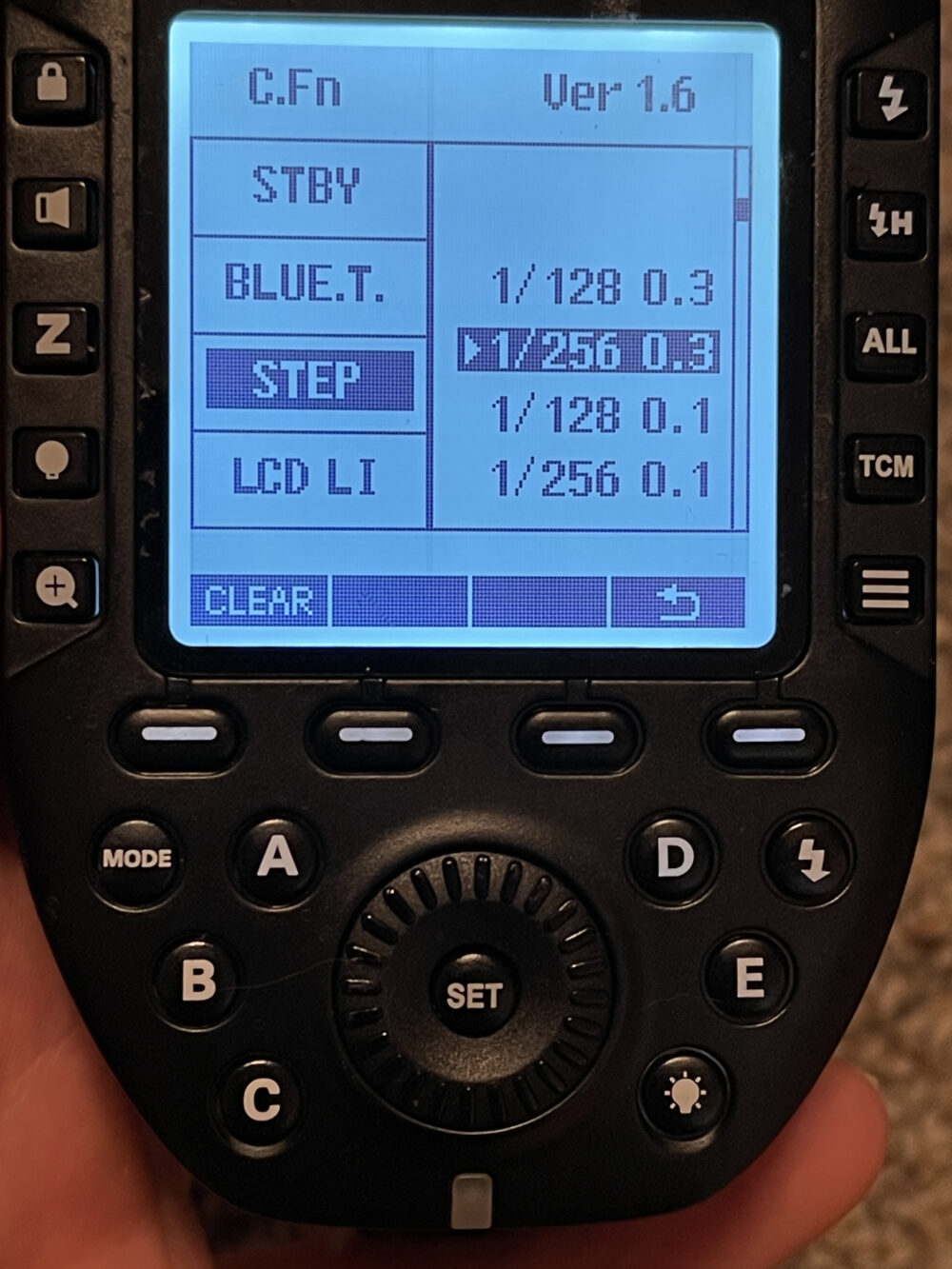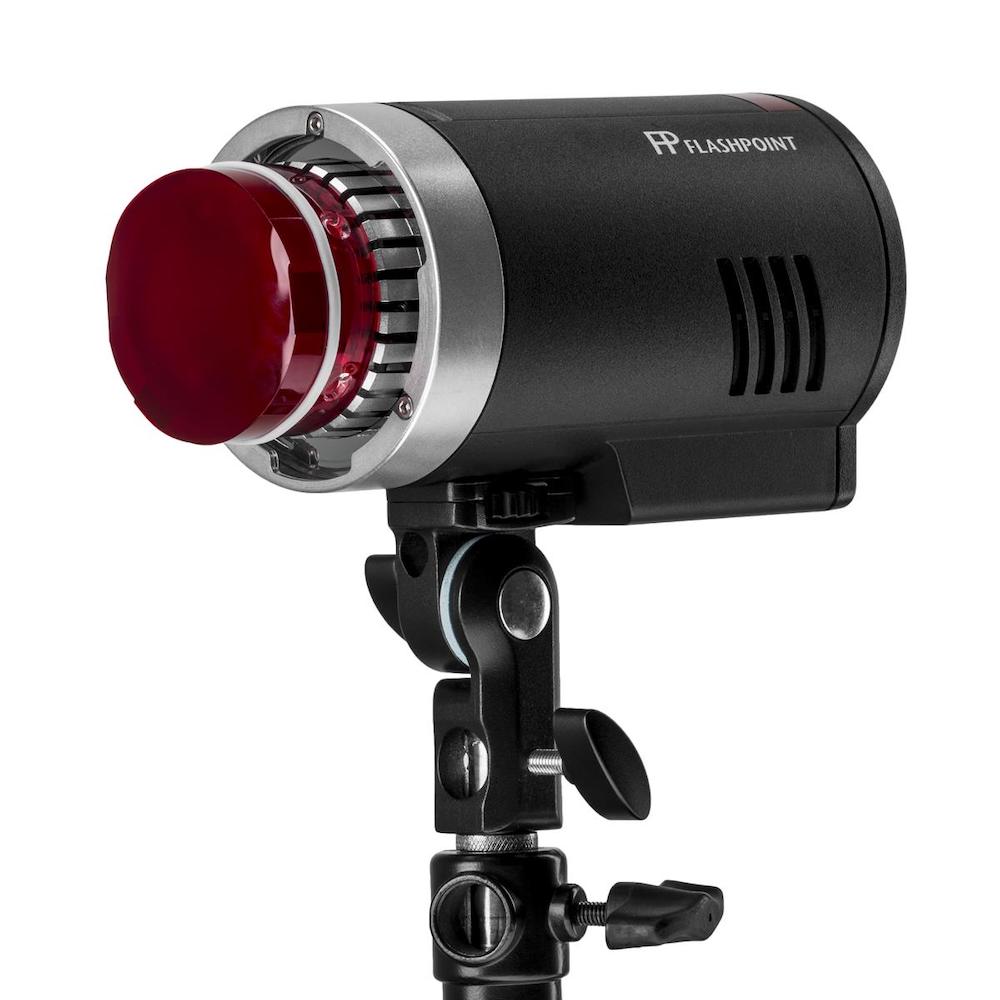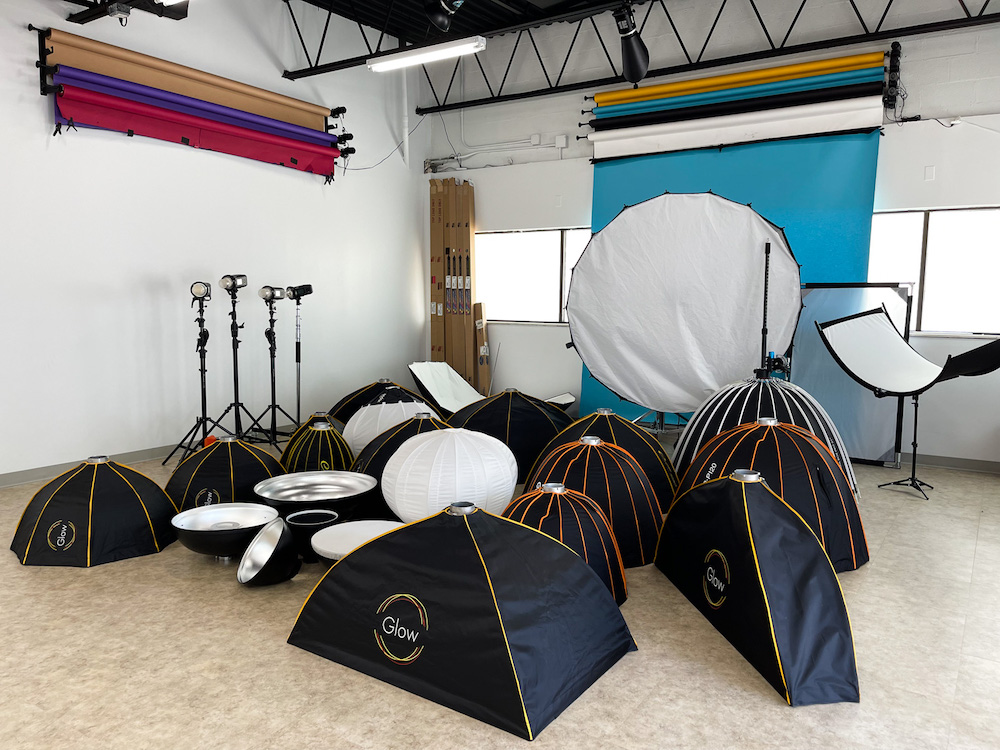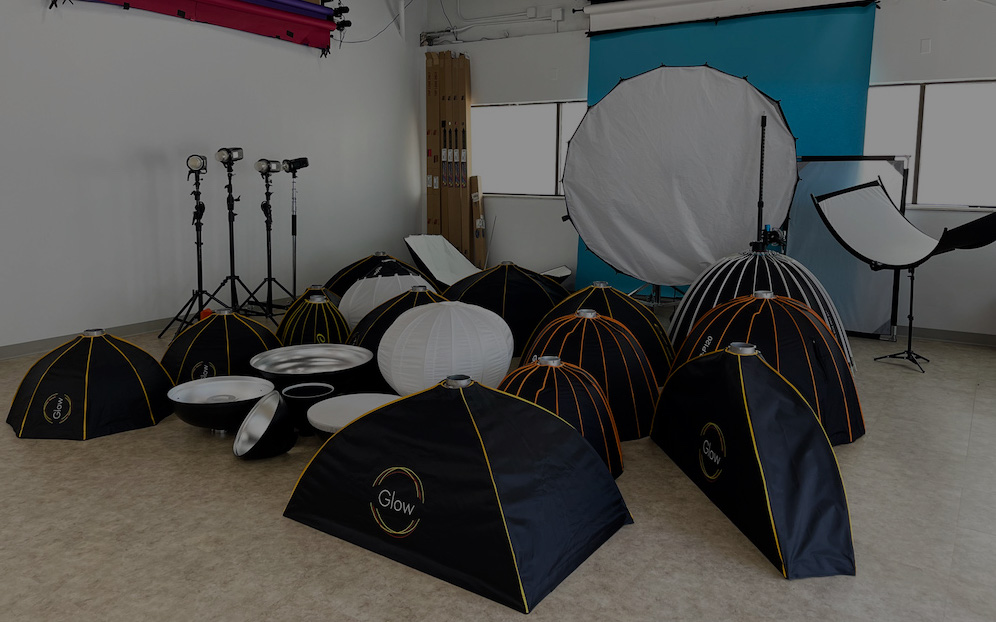In this series, I respond to questions about Flashpoint and flash photography. If you have a question you’d like answered in a future article, leave it as a comment on my Instagram or YouTube page. Now, let’s get started.
I see people triggering their flashes at power levels like “1/256 +.4” or “1/16 +.9”. Those numbers are unavailable to me. I can only do full power levels, +.3, and +.7. How do I unlock those in-between values?
This has two answers. First, the minimum power setting of 1/256 is only available on some lights, while others have a minimum setting of 1/128. You can see the minimum power of your flash by adjusting the power level directly from the flash, rather than the trigger. If your flash is capable, then you can adjust your minimum power setting to be 1/256 instead of 1/128 within the custom functions of a trigger.
As for the “in-between values”, that is called 10th stop control. This gives you nine steps of control between every full power level instead of two. This was first introduced with the Pro series of flashes. However, most lights in the R2 series now have it. Like the minimum power setting, you can activate 10th stop control from the transmitter’s custom function menus.
On the R2 Pro II, for instance, there is the “STEP” custom function with four options.
1/128 .3 : Minimum power setting of 1/128 with third stop control
1/128 .1 : Minimum power setting of 1/128 with tenth stop control
1/256 .3 : Minimum power setting of 1/256 with third stop control
1/256 .1 : Minimum power setting of 1/256 with tenth stop control
I tend to change this setting frequently. When I want to move between power levels faster as I rapidly change settings (when photographing a wedding or event), I like 1/128 .3. But when I’m in the studio, I like the extra power levels to really dial in lighting, so I use 1/256 .1.

Can you put a 250 watt modeling bulb in a BLAZ 300?
It is not advised to replace a modeling lamp with a more powerful version in any of the AC-powered flashes. The electronics and cooling system are designed to accommodate the lamp that was included, and exceeding that may lead to damage.

How do you gel your Xplor 300 Pro? I love the magnetic system the 200 has. Does it exist for the 300?
The magnetic gel system for the eVOLV 200 Pro round head can only exist due to its recessed head design. While lights like the XPLOR 300 Pro with a bare bulb offer serious benefits when it comes to light quality, they are more complicated to gel.
The most elegant solution is the pre-cut gels from Flashpoint. They come in both color correction and color effect. These are perfectly sized, ensuring no overlap, and even have holes to align with the ventilation gaps in the glass barebulb cover.

I’m new to flash and don’t understand channels, groups, and power levels. Is there an easy way to learn this?
After a decade of off-camera flash photography setups, this is the best analogy I’ve come up with: Cars can travel on various highways. They use a specific-numbered highway to get to a specific destination. On those highways, there are different lanes which allow cars to travel at different speeds.
In the off-camera flash photography world, cars are lights, highways are channels, lanes are groups, and speed is power level. We put lights on the same channel so they can all be fired simultaneously. We separate lights into groups so they can be used at different power levels. If multiple lights are on one group, they will have the same power level.

What’s the best light modifier?
This is very similar to asking, “What’s the best car?” That depends, are you looking for speed? Towing power? Great gas mileage? Styling? Luxury features? One cannot answer “What’s the best car?” without additional qualifications.
It’s the same for light modifiers. A softbox has a completely different purpose than a reflector. The larger the softbox, the softer the quality of light. Although, there’s always a point where a softbox can be too large for a space, or too much of a hassle outdoors. Umbrellas are extremely portable, but lack control. Beauty dishes are stable outdoors but can take up all the room in a trunk. Every modifier has different light quality, along with pros and cons for usability. For that reason, there is no “best” light modifier.
Having said that, I will share what I think is a great first light modifier. The Glow 36” Quick Octa is an incredible starting point. It’s very affordable. It includes a grid for restricting the light coverage, double diffusion, and a beauty dish plate. All of these help you learn how to control light further. 36” is large enough to create very soft light when used close for portraits of individuals, and even small groups. It’s manageable outdoors. Although, it will definitely require some weights to prevent it from tipping with wind. Its size is a great starting point to further develop your preferences for lighting.
How can I prevent misfires?
- Make sure you are using alkaline batteries in the triggers, or 1.5v rechargeable Li-on, and that your batteries are not very low.
- Keep transmitter and off-camera units with the same ID in the custom function settings.
- Stay off channel 1-4, which are more likely to have competing traffic from other consumer electronics.
- Make sure S1 / S2 is not active. This is for triggering lights optically.
- Make sure you are not using the optical mode (designated with a flash bolt in the upper left corner) on your on-camera commander. This has been omitted on more recent lights but still exists on lights such as the Zoom R2 Li-on.
- If you are using flashes in close proximity, use the custom function 0-30m to reduce the wireless transmission distance as the default 1-100m does not work well in very close proximity.
- Make sure contacts on your camera, transmitter, and speedlight are properly aligned, tight, and clean. If they are very dirty, clean them with a Q-tip and alcohol.
- Make sure your camera is not in electronic shutter. Outside of the Sony A1, this will not trigger flash. Other options that can cause issues are electronic front-curtain sync and red-eye modes.
Stay tuned for more “Ask Rob Hall” sessions!

